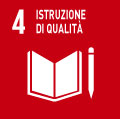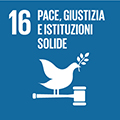- Docente: Filippo Andreatta
- Crediti formativi: 6
- SSD: SPS/04
- Lingua di insegnamento: Inglese
- Moduli: Filippo Andreatta (Modulo 1) Claudio Christopher Passalacqua (Modulo 2)
- Modalità didattica: Convenzionale - Lezioni in presenza (Modulo 1) Convenzionale - Lezioni in presenza (Modulo 2)
- Campus: Bologna
-
Corso:
Laurea Magistrale in
Ingegneria elettronica (cod. 0934)
Valido anche per Laurea Magistrale in Telecommunications Engineering (cod. 9205)
-
Orario delle lezioni (Modulo 1)
dal 18/02/2025 al 18/03/2025
-
Orario delle lezioni (Modulo 2)
dal 01/04/2025 al 10/06/2025
Conoscenze e abilità da conseguire
The course aims to provide students with advanced knowledge of the interplay between technology and international politics. The course looks at how technology has shaped change in the international system and how different states have used technology to advance their global positioning. At the end of the course students is able to: a) discuss major transformations of the international system, b) understand how political factors can affect technological change.
Contenuti
The course is organized in two parts, as detailed in the syllabus. In the first part (10 hours, taught by Professor Andreatta), the relationship between technological progress (or lack of it) and the use of force from antiquity until the early modern era. In the second part (20 hours, taught by Prof. Passalacqua), this historical knowledge is applied to the contemporary context. It will aim to provide occasions for in-depth discussions of selected case studies (e.g., on chips or 5G). Students will also learn how to write memos on policy-relevant topics. For a full description of the course contents, see the list of themes and readings in the section below.
Given the comprehensive nature of the subject, this course is only intended for attending students. Attendance will be monitored. Students are also required to carefully read the assigned material before the class session and – in case of the seminars – active participation will be expected.
Testi/Bibliografia
Readings/Bibliography
1. The use of force in Ancient Greece and Rome
• Class notes on Virtuale, Chapters 1 and 2
2. The use of force in Middle Ages
• Class notes on Virtuale, Chapter 3
3. A Revolution in Warfare?
• Class notes on Virtuale, Chapters 4 and 5
4. Europe and the World
• Class notes on Virtuale, Chapter 6
5. Technology and change in IR theory
Realist, liberal and constructivist perspectives of technology
• Gilpin, R. (1981). War and Change in World Politics. Cambridge University Press (Ch. 3).
• Eriksson, J., & Newlove-Eriksson, L. M. (2021). Theorizing technology and international relations: Prevailing perspectives and new horizons. In Technology and International Relations (pp. 3-22). Edward Elgar Publishing.
• Drezner, D. W. (2019). Technological change and international relations. International Relations, 33(2), 286-303.
6. State perception and regulation of technological innovation
How states regulate risk of technological innovation (e.g., governance, cyber-security, New Economic State Craft)
• Bradford, A. (2023). Digital Empires: The Global Battle to Regulate Technology. Oxford University Press (Ch. 1-3)
• Clark-Ginsberg, A., & Slayton, R. (2019). Regulating risks within complex socio-technical systems: Evidence from critical infrastructure cybersecurity standards. Science and Public Policy, 46(3), 339-346.
7. State competition on technological innovation & Seminar (Chip war)
How states promote technological innovation to improve their international standing (e.g., state strategies for innovation, political and economic factors influencing innovation)
• Taylor, M. Z. (2016). The Politics of Innovation: Why Some Countries are Better than Others at Science and Technology. Oxford University Press (Ch. 5-6).
• Miller, C. (2022). Chip war: the fight for the world's most critical technology. Simon and Schuster (some chapters).
8. Geopolitics of telecommunication and internet technologies & Seminar (5G)
States’ conflicting views over telecommunication and internet technologies
• Timmers, P., & Serentschy, G. (2023). Sovereignty and 6G. In The Changing World of Mobile Communications: 5G, 6G and the Future of Digital Services (pp. 253-282). Cham: Springer International Publishing.
• Hoffmann, S., Bradshaw, S., & Taylor, E. (2019). Networks and geopolitics: how great power rivalries infected 5G. Osford Information Labs.
9. Technology and war (1): Conventional warfare & Seminar (Drone warfare)
Impact of technological changes in conventional warfare and traditional militaries
• Black, J. (2013): War and Technology. Indiana University Press (Introduction and Ch. 6)
• Calcara, A., Gilli, A., Gilli, M., Marchetti, R., & Zaccagnini, I. (2022). Why drones have not revolutionized war: The enduring hider-finder competition in air warfare. International Security, 46(4), 130-171.
• Calcara, A., Gilli, A., Gilli, M., & Zaccagnini, I. (2022). Will the Drone Always Get Through? Offensive Myths and Defensive Realities. Security Studies, 31(5), 791-825.
10. Technology and war (2): Unconventional warfare and the future of technological warfare
Impact of technological changes in unconventional/hybrid warfare (e.g., cyber warfare, information warfare, IEDs) as a challenge to conventional military forces
• Lanoszka, A. (2016). Russian hybrid warfare and extended deterrence in eastern Europe. International Affairs, 92(1), 175-195.
• O’Hanlon, M. E. (2018). Forecasting change in military technology, 2020-2040. Military Technology, 2020, https://www.brookings.edu/wp-content/uploads/2018/09/FP_20181218_defense_advances_pt2.pdf
• Biddle, S. (2023). Back in the Trenches: Why New Technology Hasn't Revolutionized Warfare in Ukraine. Foreign Affairs, 102, 153.
11. Expanding the arms race into new spaces (robotics, space, nuclear)
Arms race of global powers in terms of technology (e.g., nuclear advancements, space warfare, US-China tech rivalry, North Korea’s missile program)
• MacKenzie, D. (1989). Technology and the arms race. International Security, 14(1), 161-175.
• Zala, B. (2019). How the next nuclear arms race will be different from the last one. Bulletin of the Atomic Scientists, 75(1), 36-43.
12. Political risk analysis & How to write a policy memo
Conclusions and discussion of policy memos
• For discussion part: three examples of good policy memos (exam preparation)
Metodi didattici
Lectures and seminars.
Modalità di verifica e valutazione dell'apprendimento
Students will write a 1,500-word policy memo (+/- 20%) on a topic coordinated with the instructor. Details on the structure of the policy memo will be provided during the course.
Strumenti a supporto della didattica
Virtuale.
Orario di ricevimento
Consulta il sito web di Filippo Andreatta
Consulta il sito web di Claudio Christopher Passalacqua
SDGs



L'insegnamento contribuisce al perseguimento degli Obiettivi di Sviluppo Sostenibile dell'Agenda 2030 dell'ONU.
